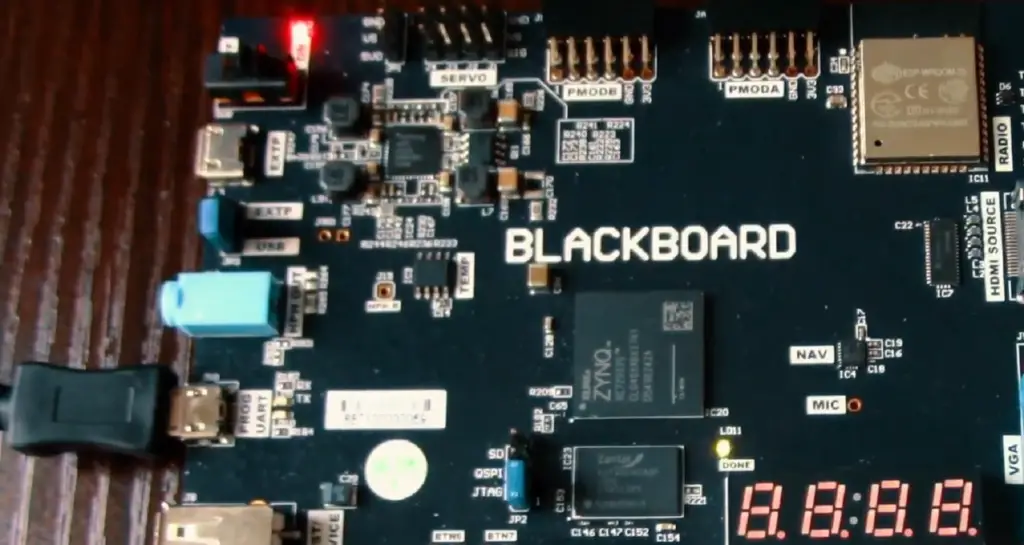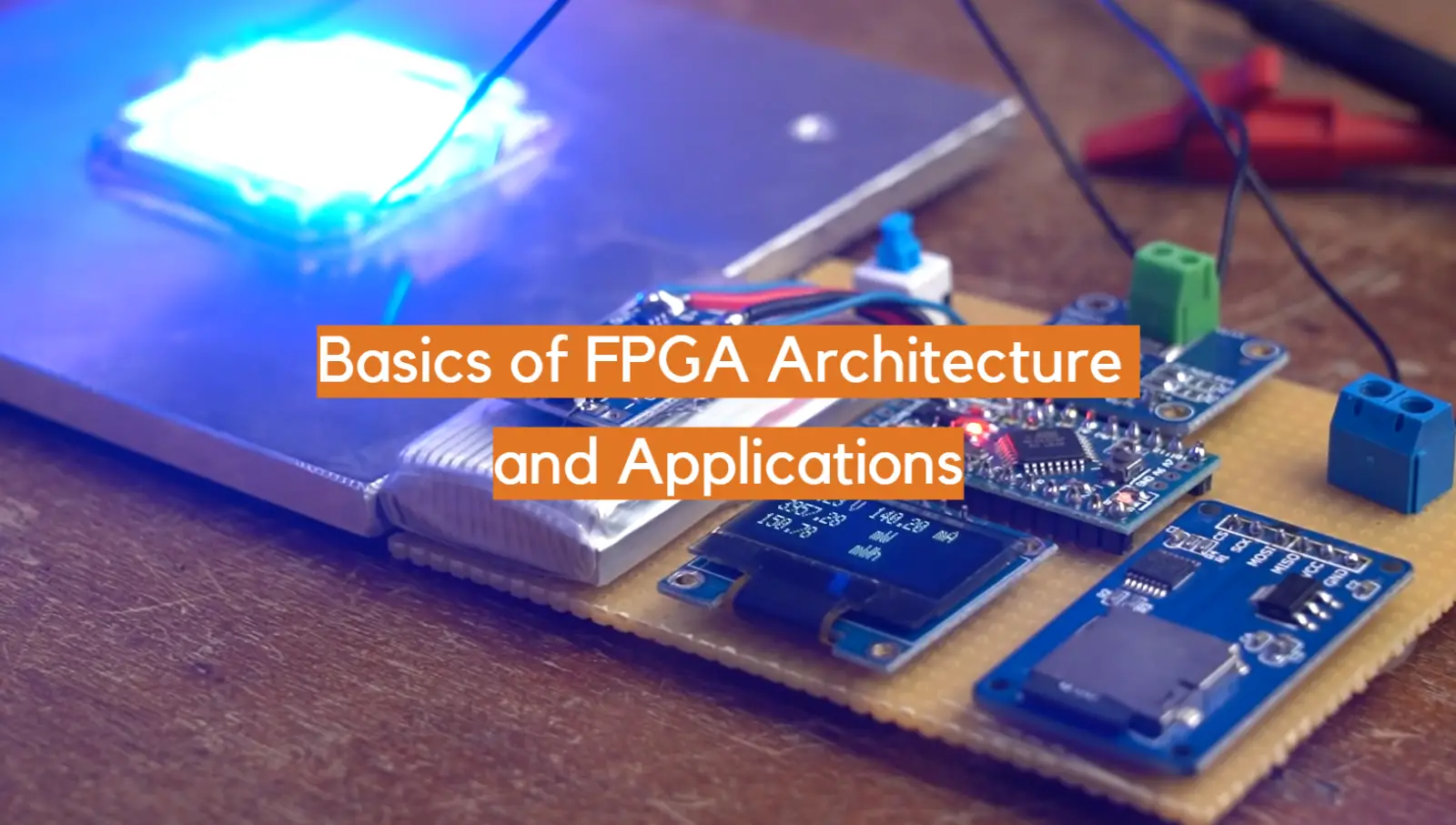FPGA is one of the most complex and versatile architectures in the market today. It has a wide range of applications, from low-power devices to high-performance computing. In this comprehensive guide, we will answer some of the most common questions about FPGA architecture and applications. We will also provide useful tips on how to get started with FPGA development. So if you are looking for an in-depth understanding of this amazing technology, read on!
What is FPGA?
It consists of a matrix of hundreds or thousands of configurable logic blocks, connected by programmable interconnects. The user can configure the FPGA with hardware description language (HDL) to create custom digital circuits or “cores”. FPGA provides users with the flexibility to design systems without specialized hardware and allow them to easily reprogram their designs if needed.
Applications for FPGAs include medical imaging and computer vision, signal processing, aerospace systems, industrial automation and robotics, automotive applications and more. [1], [2], [3]

FPGA Architecture
FPGAs are built on a grid of configurable logic blocks (CLBs) connected by programmable interconnects.
Logic Blocks are small building blocks which contain combinational logic circuits such as AND gates, OR gates, XOR gates etc., as well as registers and counters. The number and size of these blocks will vary depending on the model and manufacturer of the FPGA.
Interconnects are the connections between logic blocks and determine how data flows through the FPGA. The user is able to configure these interconnects during design time, which allows them to create complex digital circuits with a high degree of flexibility.
CLBs also contain registers, look-up tables (LUTs), and flip flops that can be configured to perform custom operations. The programmable interconnects provide the ability to route signals between different parts of the FPGA.
Input/output (I/O) blocks are present as well and provide the ability to interface with outside systems. Depending on the application, FPGAs can have custom-built blocks such as memory controllers or digital signal processing (DSP) units which are tailored for specific tasks.
Switch matrixes and multiplexers allow for efficient routing of data within the FPGA. The clock tree is responsible for controlling the timing of operations in the FPGA, providing a synchronous environment which can ensure reliable operation.
Additionally, FPGAs typically contain dedicated resources such as embedded RAM, multipliers, and specialized interfaces for communication with external devices. This makes them well-suited for many types of data processing tasks. [1], [2], [3]

Different Types of FPGAs
Just like many other types of integrated circuits, FPGAs come in a variety of sizes and configurations. In this section we will discuss the most popular types of FPGAs and the advantages of each.
Low End FPGAs
The most common type of FPGA is known as a low-end FPGA. Low-end FPGAs are generally the least expensive option, due to their lower complexity and smaller size. These FPGAs typically have fewer logic elements, with some models having as few as 2K logic elements. While these devices offer lower speed performance than other types of FPGAs, they are still capable of performing many basic tasks quickly and efficiently. Low-end FPGAs are often used for low power consumption, low logic density and low complexity per chip.
Mid Range FPGAs
Mid-range FPGAs are the most popular type due to their versatility and cost-effectiveness. These devices typically contain between 10,000 and 150,000 logic elements, making them suitable for a wide variety of applications such as embedded system development, automation systems, automotive control systems, image processing systems and more.
High End FPGAs
By far the most popular type of FPGA are high end FPGAs. These FPGAs feature a large number of configurable logic blocks (CLBs) and routing resources, allowing them to perform complex computations in parallel. High end FPGAs also have a relatively low power consumption, making them suitable for applications that require a lot of processing power but minimal energy costs. [2]

Applications of FPGAs
FPGAs boast a wide range of applications, from simple digital circuits to complex embedded systems. The use for your particular FPGA model will depend on the logic elements and routing resources available. In this section, we will discuss some of the most common applications for FPGAs.
Aerospace and Defense
FPGAs are increasingly being used in aerospace and defense applications due to their flexibility and reliability. They enable faster processing, better hardware security, advanced control systems and improved signal integrity. FPGAs can be used for the development of electronic warfare systems, radar systems or imaging and navigation systems. FPGAs are often used in very demanding space applications such as satellite communication or military communications.
The most commonly used FPGA-based application is embedded vision which helps satellites identify objects on the ground or detect changes in terrain over a long period of time. FPGAs also offer great performance when it comes to guidance and navigation operations such as Autopilot, Flight Management Systems (FMS) or Missile Guidance Control Systems.
Medical Electronics
FPGAs are often used in medical electronics. Their reprogrammable and customizable features make them ideal for complex tasks such as analyzing, processing, and interpreting patient data. In addition to providing a cost-effective solution for these types of applications, FPGAs can also provide improved performance and reliability. A typical application might include the use of an FPGA for signal processing or image analysis. This could include functions such as detecting anomalies in ECG signals or analyzing X-ray images. Other uses may include controlling surgical robots or even driving prosthetics or artificial limbs using body signals (e.g., EMG).
ASIC Prototyping
FPGAs have also been used as an invaluable tool for the rapid prototyping of Application Specific Integrated Circuits (ASICs). A prototype ASIC allows designers and engineers to test their designs before committing resources to production level ASICs. An FPGA provides a way for a design engineer to quickly and easily set up, program, modify, and validate an ASIC prototype in the early stages of development. Not only does this save time and money but it also makes the process of debugging a lot simpler. For example, if there is an error in the logic of a prototype ASIC, the engineer can easily reprogram the FPGA to fix it. In addition, FPGA prototypes are much more flexible than fixed-logic ASICs and allow for dynamic changes during development.
Audio Applications
FPGAs are widely used in audio applications such as digital signal processing, sound synthesis and analog-to-digital conversion. In these types of applications, the FPGA provides a powerful platform to implement low latency and high performance algorithms that can be programmed using a variety of tools.In sound synthesis applications, FPGAs are used to generate waveforms that have different shapes (e.g., sine, square, sawtooth) for use in musical instruments or other audio devices. By programming the FPGA’s logic elements, it is possible to produce any arbitrary waveform by combining multiple sinusoidal signals.

Automotive Applications
FPGAs are heavily utilized for automotive applications mainly due to their ability to be reprogrammed quickly and efficiently. They can be reconfigured for different tasks on the fly, unlike ASICs (application-specific integrated circuits) which must be designed from scratch each time a new application is needed. The use of FPGAs allow manufacturers to reduce the cost and complexity of design since they can adapt existing IP (intellectual property).
This allows them to add features later in the development cycle rather than having to go back and redesign components when something changes or fails. It also simplifies the testing process since errors can easily be isolated and corrected.
Broadcast
FPGAs are increasingly being used in broadcast applications. This is due to their flexibility and programmability, which allows them to do tasks that would otherwise require dedicated hardware. FPGAs can be used for many different broadcasting tasks, such as signal processing, encoding/decoding and data manipulation. They are also able to scale up or down depending on the task at hand.In terms of signal processing, FPGAs can be used to filter signals and reduce noise. This helps create a more consistent and reliable form of transmission with less interference from outside sources.
Furthermore, they can also be used for frame synchronization, which is important in video broadcasting where multiple frames must be transmitted in order for the video stream to appear smooth. FPGAs are also capable of data manipulation, which is useful in broadcast applications such as radio and television.
Consumer Electronics
FPGAs are being employed more and more to bring advanced features to consumer electronics products. FPGAs can provide high reliability, low power consumption, and cost-effectiveness as compared to conventional microprocessors or ASICs (application specific integrated circuits). They can run a variety of different software packages simultaneously without the need for additional hardware.
High Performance Computing
FPGAs are becoming increasingly popular in high performance computing (HPC) applications due to their ability to provide massive parallelism and low latency. FPGAs have been used successfully in a variety of HPC applications such as image processing, video encoding/decoding, machine learning/deep learning, financial analytics and data center workloads. In addition to providing the ability for ultra-fast processing speeds, FPGAs offer several key advantages over traditional CPUs or GPUs for HPC.
Overall, FPGA technology is useful in a variety of applications due to its flexibility, low cost and high performance capabilities. With continuing advancements in technology, we can expect to see even more uses for FPGAs in the future. [1], [2], [3]

FAQ
Are FPGAs faster than CPU?
In general, FPGA performance depends on the specific application and architecture of the device. However, in most cases, an FPGA is faster than a CPU for certain types of applications because its logic blocks, which can be configured for different tasks, are more efficient than using multiple general purpose instruction sets.
FPGAs also have several advantages over CPUs when it comes to speed. For example, they do not need to perform context switching between instructions, as many modern processors do. Moreover, their configuration can be changed quickly without needing to re-program or recompile software code. This means that new algorithms or functions can be tested quickly and with minimal disruption to existing operations.
Is an FPGA analog or digital?
A field-programmable gate array, or FPGA, is a type of integrated circuit designed to facilitate the implementation of digital logic designs. It is composed of logic elements that can be programmed and reprogrammed to create custom hardware applications.
FPGAs can only create digital applications, as they only contain logic elements that process binary signals. Therefore, FPGAs can be used to create digital systems such as processors, memories, and communication networks. These applications are typically implemented by connecting the logic elements together via programmable interconnects.
What is the basic architecture of FPGA?
The basic architecture of an FPGA includes several components:
- Input/Output (I/O) Circuits – Provide the interface between the FPGA and its external environment. They include pads for connecting external signals as well as buffers, latches, and bus transceivers.
- Configurable Logic Blocks (CLBs) – These blocks contain configurable logic elements including Look Up Tables (LUTs), Flip Flops (FFs), and multiplexers (MUXes). They are the core of an FPGA, providing programmable logic capacity.
- Interconnects – These provide a connection between CLBs and other components within the FPGA. Interconnects can be configured to route signals from one part of the array to another.
- Programming Interface Circuits – Provide the interface for programming the FPGA at power-up or during runtime. They also allow data to be read out of the device as well as receive configuration data from external sources such as Flash memory.
What is an FPGA and its application?
FPGAs, or Field Programmable Gate Arrays, are integrated circuits that can be programmed to realize complex digital functions. They are used in a variety of industries including telecommunications, automotive, aerospace and defense, medical imaging and industrial automation. FPGAs have the ability to reconfigure their logic resources on-the-fly according to an application’s needs making them much more flexible than traditional ASICs (Application Specific Integrated Circuits).
FPGAs can be used for a wide range of applications such as image processing, embedded systems design, high performance computing and even AI-based applications. FPGAs also provide multiple advantages over CPUs and GPUs due to their parallelism capabilities which allow them to efficiently process data in large volumes.
What is different FPGA architecture?
FPGAs have a different architecture than traditional CPUs or GPUs. FPGAs are composed of a large number of programmable logic blocks, which can be configured to execute various logic operations. Unlike CPUs and GPUs, FPGAs don’t have any predefined instruction set; instead, the logic operations are defined by the user in a hardware description language (HDL). This allows for much more flexibility and customizability in design. Additionally, FPGAs usually also have high-speed serializers/deserializers (SERDES) and memory blocks that can be used to increase throughput and reduce power consumption.
Which language is used in FPGA?
FPGAs are typically programmed using hardware description languages (HDLs) such as VHDL and Verilog. HDLs allow you to create digital logic designs from the level of individual logic gates up to higher-level components like memories and processors, which can then be implemented directly into an FPGA.
These HDLs are compiled down into a netlist, which is basically an electrical schematic representing the FPGA design in terms of its transistors, flip-flops and other elements. The netlist is then synthesized by specialized tools and loaded onto the FPGA chip itself to create your custom circuit design.
In addition to HDLs, newer FPGAs have started supporting high-level languages such as C, which allow you to design components in a more software-like interface. This can be especially useful for prototyping and debugging, while also allowing easier portability of designs between different platforms.
Useful Video: What’s an FPGA?
Conclusion
FPGAs have become increasingly popular in recent years due to their versatile architecture, low power consumption, and relative affordability.
FPGAs can be used in a wide variety of applications, from small IoT devices to large industrial systems. By understanding the basic concepts behind FPGA design and development, designers can take advantage of this powerful technology to create innovative solutions for their projects. With careful planning and consideration of application requirements, an FPGA can provide tremendous value while reducing cost and time-to-market.
At its core, FPGA is an incredibly powerful tool with efficient performance capabilities that make it ideal for many applications. However, designing with an FPGA requires knowledge of both hardware and software engineering principles as well as a deep understanding of the FPGA architecture. With this in mind, designers should be careful to ensure they have all the necessary knowledge and resources before beginning their project.
We hope that this guide has provided some valuable information on the basics of FPGA architecture and applications. With proper research and planning, designers can take advantage of powerful FPGAs to build innovative solutions for their projects.
Once again, thank you for reading our epic guide on the basics of FPGA architecture and applications! We wish you success as you embark on your journey into the world of FPGAs!
References
- https://www.arrow.com/en/research-and-events/articles/fpga-basics-architecture-applications-and-uses
- https://www.elprocus.com/fpga-architecture-and-applications/
- https://www.watelectronics.com/fpga-architecture-applications/











Leave a Reply